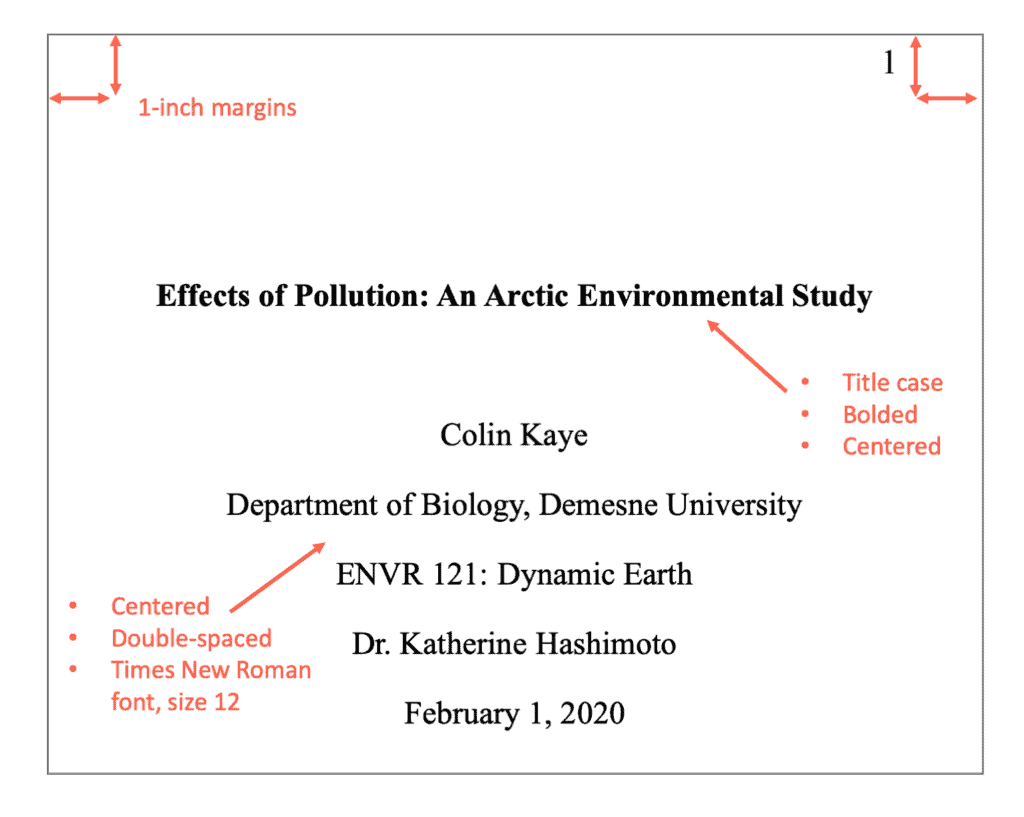How to format APA page numbers
Published October 28, 2020. Updated June 21, 2022.
In an APA style paper, page numbers generally appear in three places:
- On every page in the upper right corner (pagination for the paper)
- APA in-text citations
- The reference list
Let’s review all three.
1. Pagination for the paper
Every page written in APA style needs to have the page number listed at the top right corner of the paper. It also needs to appear on every page. It should also appear on the title page of the paper, as well as every page of the appendices, footnotes, and other supplemental sections.
The page number should be in the same font and size as the rest of your paper. APA provides different font point sizes depending on the font. For example, 12-point for Times New Roman or 11-point for Arial.
To summarize, your APA page number needs to be:
- At the top of every page (including the title page, body, appendices, etc.)
- Placed in the header
- Flush against the right margin
- In the same font and size as the rest of your paper
You also do not need to write the word “page” or use its abbreviated form of “p.” or “pp.” All it needs is the number.
It’s recommended that you use autogenerated page numbers in the “header” section of your paper. These features are available in most popular word processors.
2. In-text citations
APA style, page number are recommended (but optional) for paraphrasing, and required for direct quotations from sources with page numbers. When citing a website in APA, or other sources without page numbers, you can use paragraph numbers to mark the quote’s location instead.
In-text citation structure and example for one page:
Text (Author Last Name, Year Published, p. #)
“And in our heart—strange are the ways of evil!—in our heart there is the first peace we have known in twenty years.” (Rand, 2019, p. 32)
In-text citation structure and example for a page range:
Text (Author Last Name, Year Published, pp. #-#)
“It is not good to be different from our brothers, but it is evil to be superior to them” (Rand, 2019, pp. 12-13)
Reference list entry for both examples:
Rand, A. (2019). Anthem. Project Gutenberg. https://www.gutenberg.org/ebooks/1250 (Original work published in 1938)
Notice that unlike the in-text citations, the example reference list entry does NOT include page numbers. Whether a reference includes page numbers is not dependent on the in-text citation; it depends on the source type.
3. Reference list
Page numbers are only included in reference list entries when the following happens:
- The source has page numbers.
- The cited source is a smaller, complete work within a bigger work.
Common example sources:
- A journal article (smaller work) from a journal (bigger work)
- A newspaper article (smaller work) that was printed in a newspaper (bigger work)
- A magazine article (smaller work) in a printed magazine (bigger work)
- A chapter (smaller work) in an edited book (bigger work) where each chapter has a different author
Periodical/Article page numbers
Articles in periodicals (e.g., journals, newspapers, magazines, etc.) include page numbers in their references. The page number or page number range are formatted as the following:
Template and examples:
#-#
3-9
100-111
Notice that unlike in-text citations, there is no “p.” or “pp.” preceding the page numbers.
Example reference (journal article):
Gunn, R., Whear, R., & Douglas, L. (2012, June). A second recent canine burial from the Arnhem Land Plateau. Australian Archaeology, (74), 103-105. http://www.jstor.org/stable/23621527
Chapter in an edited book page numbers
Similar to in-text citations, page numbers are indicated by “p. #” or “pp. #-#” in the reference.
Example reference (chapter in an edited book):
Lisi, G. (2012). Uncalculated risk. In J. Brockman (Ed.), This will make you smarter (pp. 68-73). Harper Perennial.
Published October 28, 2020.
- Do I need to include the page numbers of my reference when citing it in-text?
-
You need not include page numbers in in-text citations unless you want to cite a particular page or page ranges of the source being cited. In such cases, you need to include the page information after the publication year.
If you want to cite a direct quotation, you do need to include the page information. To indicate you are quoting directly from a single page, use the abbreviation “p.” To indicate you are quoting from a continuous page range, use the abbreviation “pp.” and use an en dash between the page range (e.g., pp. 1-2). If the pages are discontinuous, use “pp.” but separate the page numbers with a comma, not an en dash (e.g., pp. 1, 3).
Below are examples of how to include page numbers in in-text citations when using direct quotations:
Narrative:
Jones (1999) states, “It is important to study all children” (p. 47).
Neer et al. (2014) agree with his argument that “the behavior of working women changes drastically” (pp. 47, 49).
Blake and Garger (2002) assert “Humans fight for rights” (pp. 32–34).
Parenthetical:
The study performed in Alaska showed that “it is important to study all children” (Jones, 1999, p. 47).
According to the study, “The behavior of working women changes drastically” (Neer et al., 2014, pp. 47, 49).
“Humans fight for rights,” says the study (Blake & Garger, 2002, pp. 32–34).
- When should I use "p." rather than "pp." as the abbreviation for page numbers in my APA citations?
-
The abbreviation “p.” refers to a single page, and “pp.” denotes multiple pages. When you want to cite a single page, use “p.” You can use “pp.” if you want to include a page range (e.g., pp. 45–57) or multiple pages that are not in a range (e.g., pp. 37, 39).
